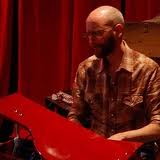
On Requests
A guest post for File Under?
Back in 2003, the incredible pianist Amy Briggs (and if you don’t know her playing, you should check out some of her performances of the David Rakowski Etudes on YouTube) was approached by the music department at U.C. Davis to engage in a residency built around the idea of new tangos for piano. As part of the project, they asked Amy to build an entire concert program of tangos, each of which needed to be no longer than three minutes. She could use completed pieces and have others write for the project, and the Davis composition faculty (including Laurie San Martin) all agreed to write new works for her and to arrange for her to record a CD of the entire concert repertoire. Amy chose me, along with several wonderful composers like Hayes Biggs, to write a new tango of no more than three minutes. She toured with these pieces for several years and the entire project is now available via Ravello Records and at Naxos.

When Amy first approached me to contribute to this project, I was both excited and quite fearful. Tangos long ago achieved the status of major cultural achievements, basically functioning as the national musical style of Argentina. As an outsider with relatively little experience of this genre I felt that there was little that I could add. At the same time, it would have been disingenuous to write a generally inspired piece and to cavalierly claim it as a tango, and I very much wanted to work with Amy and to be involved with this endeavor.
After listening to many traditional tangos for various ensembles and several experimental composers’ reinterpretations of this form, this piece began to take shape. I retain the staggered rhythm in the first half of the measure that is the most recognizable element of the traditional form, using it as an accompaniment for a simple and mournful melody that to my mind evokes the mood of the dance. The piece then presents variations on this melody. Perhaps more important than these purely musical impetuses was my attempt to portray the various aspects of the tango itself as though constantly refracting through the emotions of the dancers and the scene itself as viewed by the participants and audience. For this reason, Requests continually presents sudden shifts in mood and affect as the perspective jumps from the internal to the external and between the various perspectives on each level.
Since I knew I was writing for an astonishingly virtuosic player, as I composed this piece I allowed myself to be pulled constantly towards ever-greater feats of pianism, making this short work very daunting for most players. I’m thrilled that ACME has chosen to present Requests on the Sequenza21/MNMP concert and look forward to hearing all the pieces at Joe’s Pub this week.
– David Smooke chairs the music theory program at Peabody. He blogs regularly at NewMusicBox and plays a mean toy piano.
